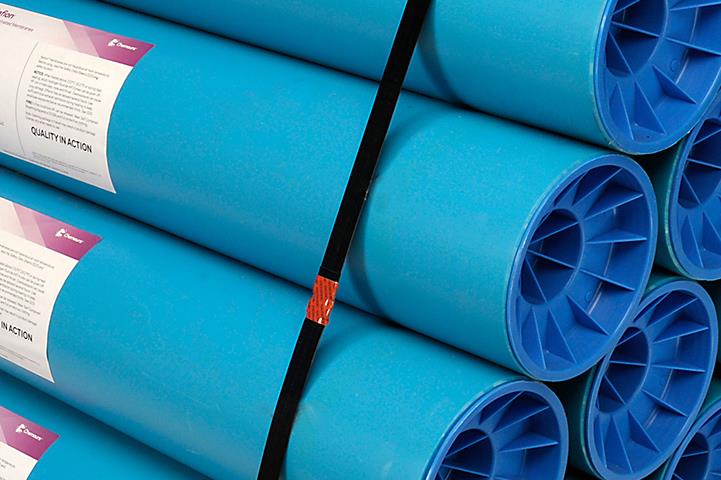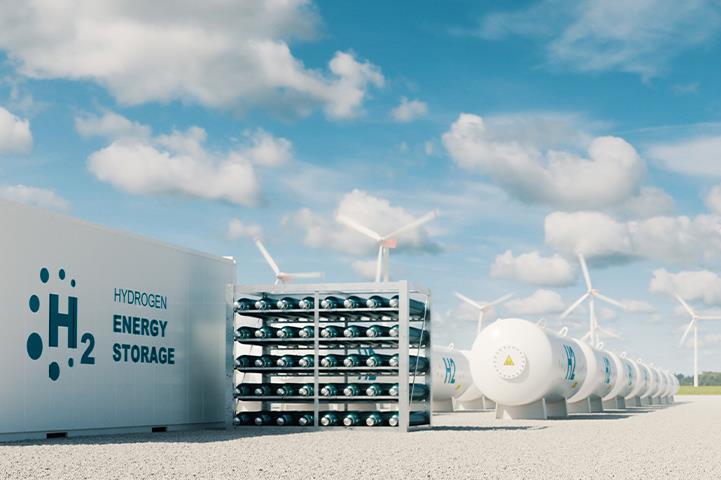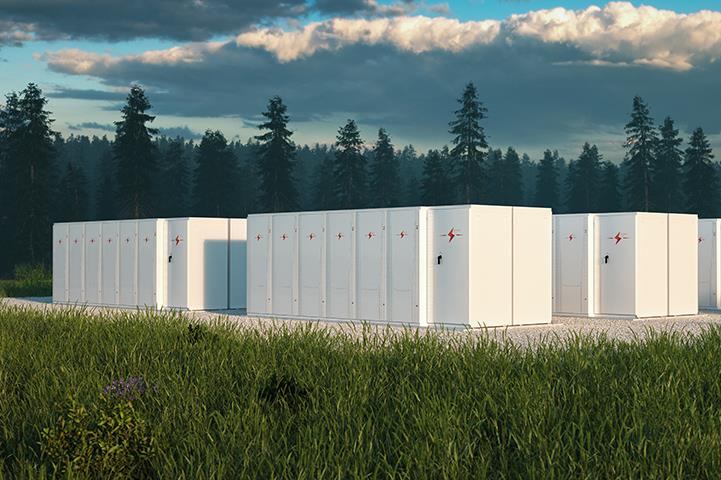Questions and Answers about Proton Exchange Membranes (PEMs)
Nafion™ proton exchange membranes are the heart of technologies critical to scaling green hydrogen—namely water electrolyzers and fuel cells. Here are some of the most commonly asked questions we receive about Proton Exchange Membranes (PEMs) and the processes they are involved in. If you have other questions that aren't answered here, please contact us.
PEMs for Water Electrolysis
- What is water electrolysis?
- Are there different types of water electrolysis?
- What is the Proton Exchange Membrane (PEM) process?
- What are the advantages of PEM for water electrolysis?
- Are there any alternatives to Nafion™ for PEMs for water electrolysis?
What is water electrolysis?
During the water electrolysis process, an electrolyzer converts electricity and water into gaseous hydrogen and oxygen, which can be stored for later use as an energy source. Unlike most hydrogen production methods, water electrolysis doesn’t produce pollution or damaging greenhouse gases as by-products of the conversion process.
Are there different types of water electrolysis?
Yes, currently there are two main types of water electrolysis systems commercially available: alkaline and proton exchange membrane (PEM) water electrolyzers. Both alkaline and PEM technologies can deliver on-site and on-demand hydrogen, as well as ultrapure, dry, and carbon-free hydrogen.
What is the Proton Exchange Membrane (PEM) process?
In this process, a PEM conducts protons from the anode to the cathode, while providing electrical insulation to the electrodes.
Negatively charged oxygen molecules give up electrons at the anode to make protons, electrons, and O₂ when a potential difference (voltage) is applied between the two electrodes. H+ ions travel through the proton-conducting membrane towards the cathode, where they combine with the electrons to make H₂.
The PEM allows only the positively charged ions to pass through to the cathode.
What are the advantages of PEM for water electrolysis?
Proton exchange membrane (PEM) water electrolysis provides a better alternative when paired with intermittent power sources. While the historical high cost of PEM components limited the system’s use in large-scale commercial applications in the past, recent technology developments have shrunk costs considerably—making PEM components more feasible options in many new use cases.
Proton exchange membrane water electrolyzers offer several advantages that make them well suited for the demands of twenty-first century hydrogen production.
Proton exchange membranes can:
- Operate at high current density that results in reduced costs, especially for systems coupled with very dynamic energy sources—like wind and solar—where sudden spikes in energy input would otherwise result in uncaptured energy
- Work with a very thin membrane, even at high pressures, because of their polymer electrolyte
- Deliver higher energy efficiency because their proton membrane has lower ohmic losses
- Exhibit a low gas crossover rate, which yields very high product gas purity critical for storage safety and direct use in fuel cells
- Operate without corrosive chemicals
Proton exchange membranes can also be used in smaller systems because they operate at high power density. Alkaline water electrolysis can require up to ten times the footprint of PEM water electrolysis—an important consideration for customers with space restrictions.
Are there any alternatives to Nafion™ for PEMs for water electrolysis
Importantly, there are no known suitable alternatives to Nafion™ for proton exchange membranes in water electrolysis. Proton exchange membrane (PEM) electrolyzers use membranes like Nafion™ because they offer high conductivity, reliability, and performance that current and future water electrolysis applications need. Their physical reliability helps facilitate easier handling, resist operational upsets, and maintain reliable performance over the membrane’s lifetime.
PEMs for Fuel Cells
- What is a fuel cell?
- Are there different types of fuel cells available?
- What is a PEM fuel cell?
- What are the benefits of PEM fuel cells?
- Are there any alternatives to Nafion™ for PEMs for fuel cells?
What is a fuel cell?
A fuel cell is a device that converts the chemical energy from a fuel into electricity through a chemical reaction with oxygen or another oxidizing agent. Hydrogen is the most common fuel, but hydrocarbons such as natural gas and alcohols like methanol are sometimes used. Fuel cells are different from batteries in that they require a constant source of fuel and oxygen/air to sustain the chemical reaction, they can however produce electricity continually for as long as these inputs are supplied.1
Are there different types of fuel cells available?
Yes, currently there are many types of fuel cells available, including:
- Alkaline Fuel Cells (AFCs)2
- Direct Methanol Fuel Cells (DMFCs)
- Microbial Fuel Cells (MFCs)
- Molten Carbonate Fuel Cells (MCFCs)2
- Phosphoric Acid Fuel Cells (PAFCs)2
- Polymer Electrolyte Membrane Fuel Cells (PEMFCs)2
- Solid Oxide Fuel Cells (SOFCs)2
What is a PEM fuel cell?
Polymer Electrolyte Membrane (PEM) Fuel Cells (PEMFC), also known as proton exchange membrane fuel cells, deliver high-power density. PEM fuel cells need hydrogen, oxygen from the air, and water to operate and do not require corrosive fluids like some fuel cells. They are typically fueled with pure hydrogen that is supplied from storage tanks or on-board reformers.
Their distinguishing features include:
- Lower temperature/pressure ranges (50°C to 100°C)
- A solid polymer electrolyte membrane
- Porous carbon electrodes containing a platinum catalyst
What are the benefits of PEM fuel cells?
PEMs offer the advantages of
- Low weight compared with other fuel cells
- Low volume compared with other fuel cells
Are there any alternatives to Nafion™ for PEMs for fuel cells?
Importantly, there are no known suitable alternatives to Nafion™ for proton exchange membranes for fuel cells. In fact, Nafion™ ion exchange membranes were the first of their kind and are still the most widely distributed PEM material in the world.3 Nafion™ is a market leader in the space, using industry-leading technology and solutions.3





